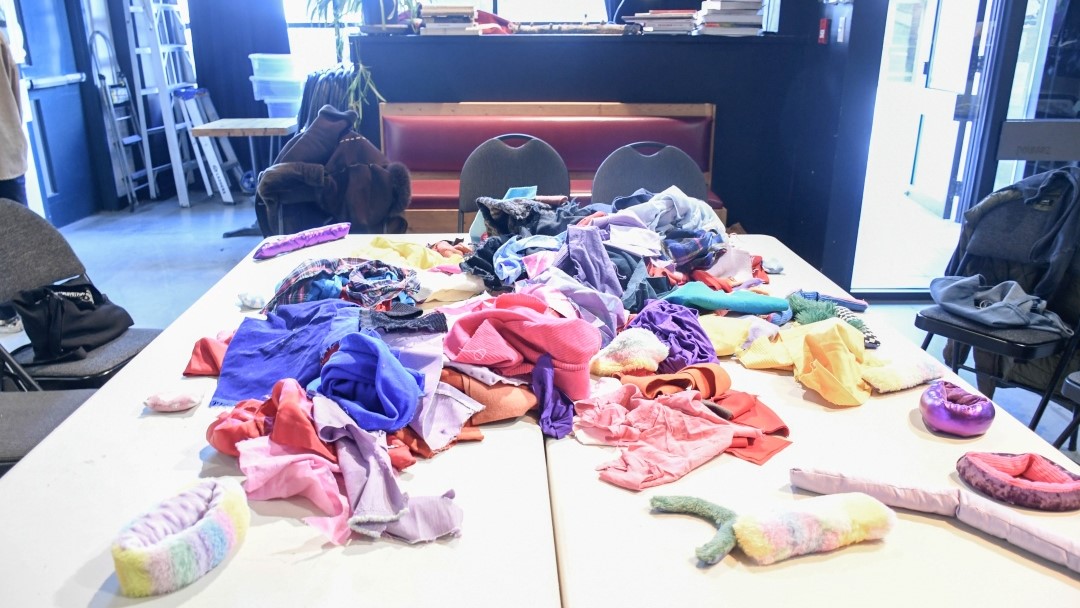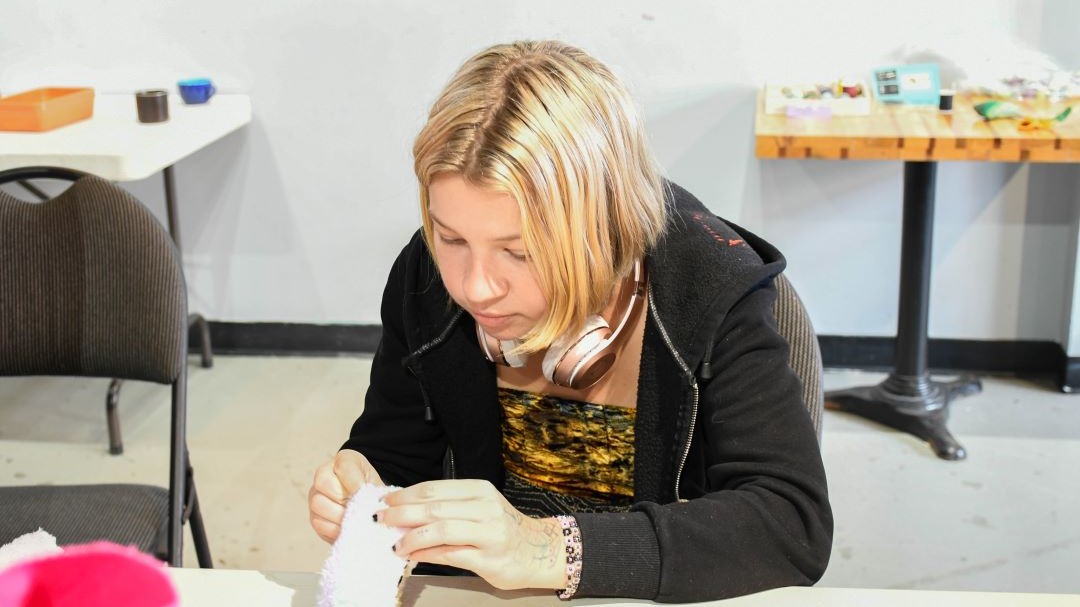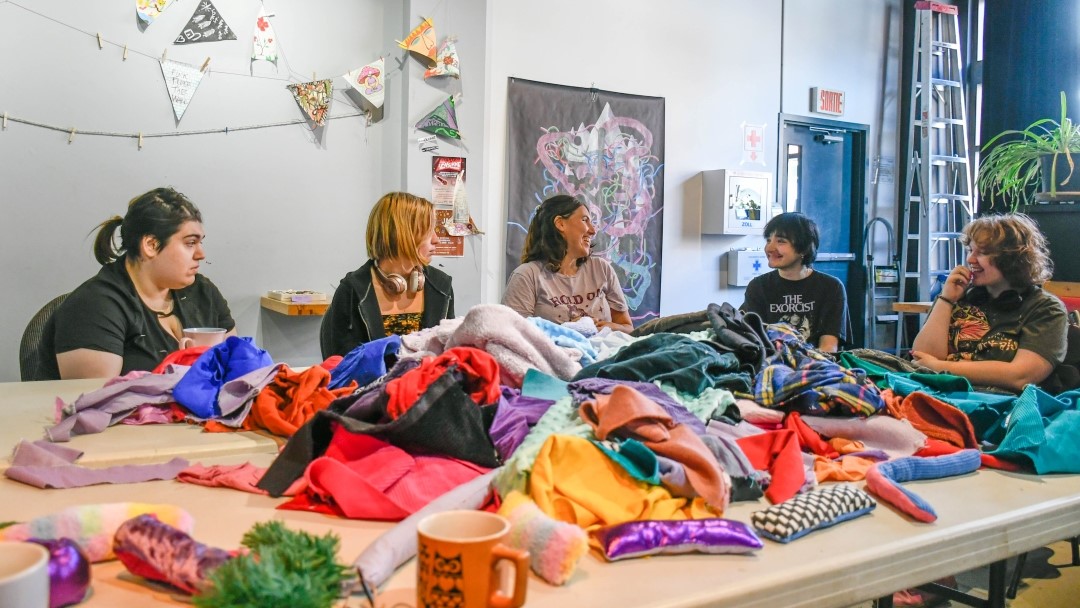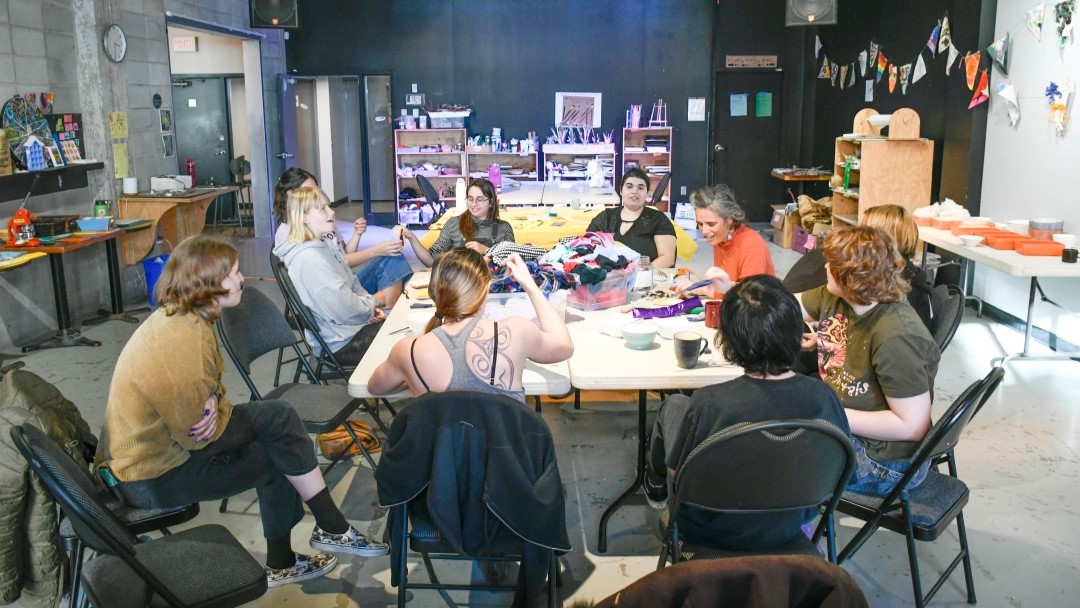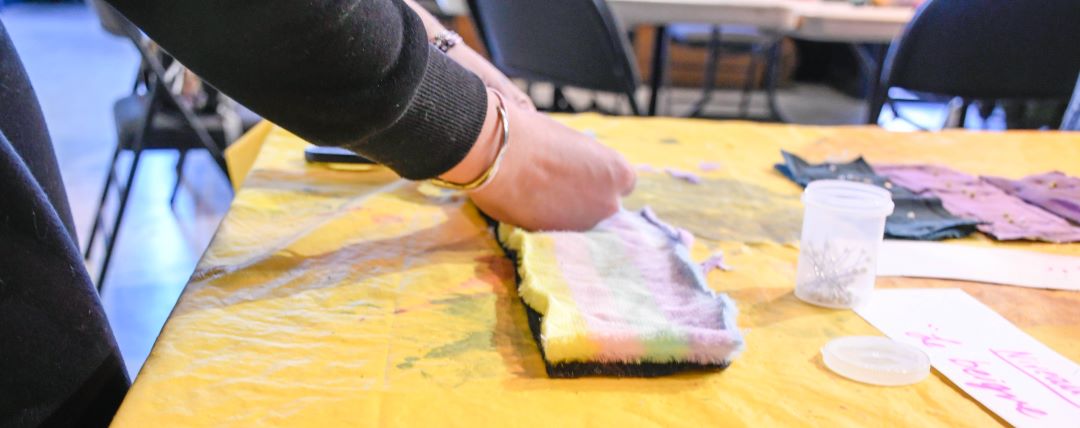Camila Vásquez –
November 2024
In our contemporary lives, where the sense of sight is often predominant, both in the real and virtual worlds, what place do we give to the other senses? How do touch, smell, taste and hearing contribute to our comfort or stress? And how do we nurture them?
Last October, Lysanne Picard led a workshop on designing anti-stress fabric toys, with the aim of exploring the sense of touch while addressing themes central to her practice, such as neurodiversity, self-regulation and well-being. Following on from the workshop she had proposed last spring, Lysanne once again proposed to focus on textures (an element present in her drawing practice). This time, instead of drawing, the invitation was to feel them, to better understand one’s own preferences and use them to create the toys.
Different stations were set up for each of the steps, allowing for a high degree of fluidity and avoiding the feeling of being overwhelmed by the need to complete all tasks in the same place and simultaneously. These measures were taken to accommodate neurodiversity and create an organized, sensory-friendly environment. One of the steps included a “texture bar” offering a variety of materials to integrate into toys, such as rice, marbles, dried peas, foam, etc. Participants could then express themselves by mixing different textures. Another station, designed to stimulate the sense of smell, offered dried flowers such as lavender and rose, which could also be incorporated into toys.
Photo: Tremplin 16-30

